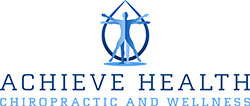Preventing Youth Sports Injuries
Article in American Chiropractic Association magazine – Statistics show alarming information about youth sports and serious injuries.
In December 2010, the Youth Sports Safety Alliance (YSSA) held its annual summit, a report card on the youth sports safety crisis. At this event, 30 distinct disciplines were represented, and the ACA Sports Council was asked to represent the chiropractic profession.

YSSA, spearheaded by the National Athletic Training Association, reported tremendous progress since its first meeting in January 2010. Through YSSA’s efforts, millions of Americans read stories and watched national news programs that highlighted youth athlete safety.
In order to make young athletes’ play safer, national organizations changed their rules, and safety awareness campaigns were initiated across many different sport organizations.
However, there is consensus among the group that we can—and should—do more. For example, while 76 pieces of safety legislation were introduced across 21 states, only 15 had been passed.
The statistics reported at the event were also staggering. Below are some of the findings.
Athlete Deaths
• There were 48 student athlete deaths in 2010. The main causes were varied brain injury, heat illness, exertional sickling and sudden cardiac arrest.
• There were approximately 120 sports related deaths in 2008-2009 across 33 states.
Sports Injuries
• The Centers for Disease Control and Prevention reports that high school athletes suffer 2 million injuries, 500,000 doctor visits and 30,000 hospitalizations each year.
• Cheer leading injuries has resulted in a 26 percent increase in emergency room visits over the past three years.
• There are three times as many catastrophic football injuries among high school athletes as among college ones.
Concussions in Athletes
• 400,000 concussions occurred in high school athletics during the 2008-2009 school year.
• Emergency department visits for concussions sustained during organized team sports doubled among 8- to 13-year-olds between 1997 and 2007 and nearly tripled among older youth.
• Concussion rates more than doubled among students ages 8 to 19 participating in sports like basketball, soccer and football between 1997 and 2007, even as participation in those sports declined.
• Female high school soccer athletes suffer almost 40 percent more concussions than males (29,000 annually).
• Female high school basketball players suffer 240 percent more concussions than males (13,000 annually).
Prevention and Care Shortage
• Concussion symptoms such as headache and disorientation may disappear in 15 minutes, but 75 percent of those tested 36 hours later still had problems with memory and cognition.
• 15.8 percent of football players who sustain a concussion severe enough to cause loss of consciousness return to play the same day.
• Half of “second-impact syndrome” incidents— such as brain injury caused from a premature return to activity after suffering initial injury (concussion)— result in death.
• 62 percent of organized sports-related injuries occur during practices.
• Only 42 percent of high schools have access to athletic training services.
• 47 percent of schools nationally fall short of the federally recommended nurse-to-student ratio. Many schools have no nurse at all.
Where Does Chiropractic Fit In?
One of the most important “calls to action Is to ensure that the youth athlete has access to health care professionals who are qualified to make assessments and decisions. History of injury is often a risk factor for future injury, making prevention Critical. Providers are needed across the spectrum of care—pre-participation physical examinations, referral for screenings of high-risk athletes and even more advanced programs like Functional Movement Screenings.
Specifically, Dcs can:
• Familiarize themselves with the gold standard tools for the pre-participation physical examination at // ppesportsevaluation.org.
• Educate parents, athletes, coaches, teachers and others about the signs and symptoms of sports injuries.
• Educate players and others that there’s a difference between pain and injury, and work to eliminate the culture of “playing through pain” without assessment.
• Ensure that both general and sport specific safety education is a priority for every administrator, coach, parent and player and that sports equipment, uniforms, playing surfaces and environmental conditions are checked for safety and best condition.
• Get involved with local coaches, athletic trainers, doctors and parents to write to state legislators and members of Congress, expressing concerns over the lack of access to resources.
• Urge lawmakers to support funding for research into youth sports injuries, and ask them to support a national registry of sports-related catastrophic injuries and fatalities to improve safety and participation.
• When working with school personnel, demand that appropriate emergency action plans and safety and medical protocols and procedures are in place at every sporting event and facility.
There are many items on the “call to action” list. Even if each of us does one or two, the role of the doctor of chiropractic will be valued in the youth sports world. Let’s do our part, get involved and help save the lives of our youth.
From: //www.acatoday.org


